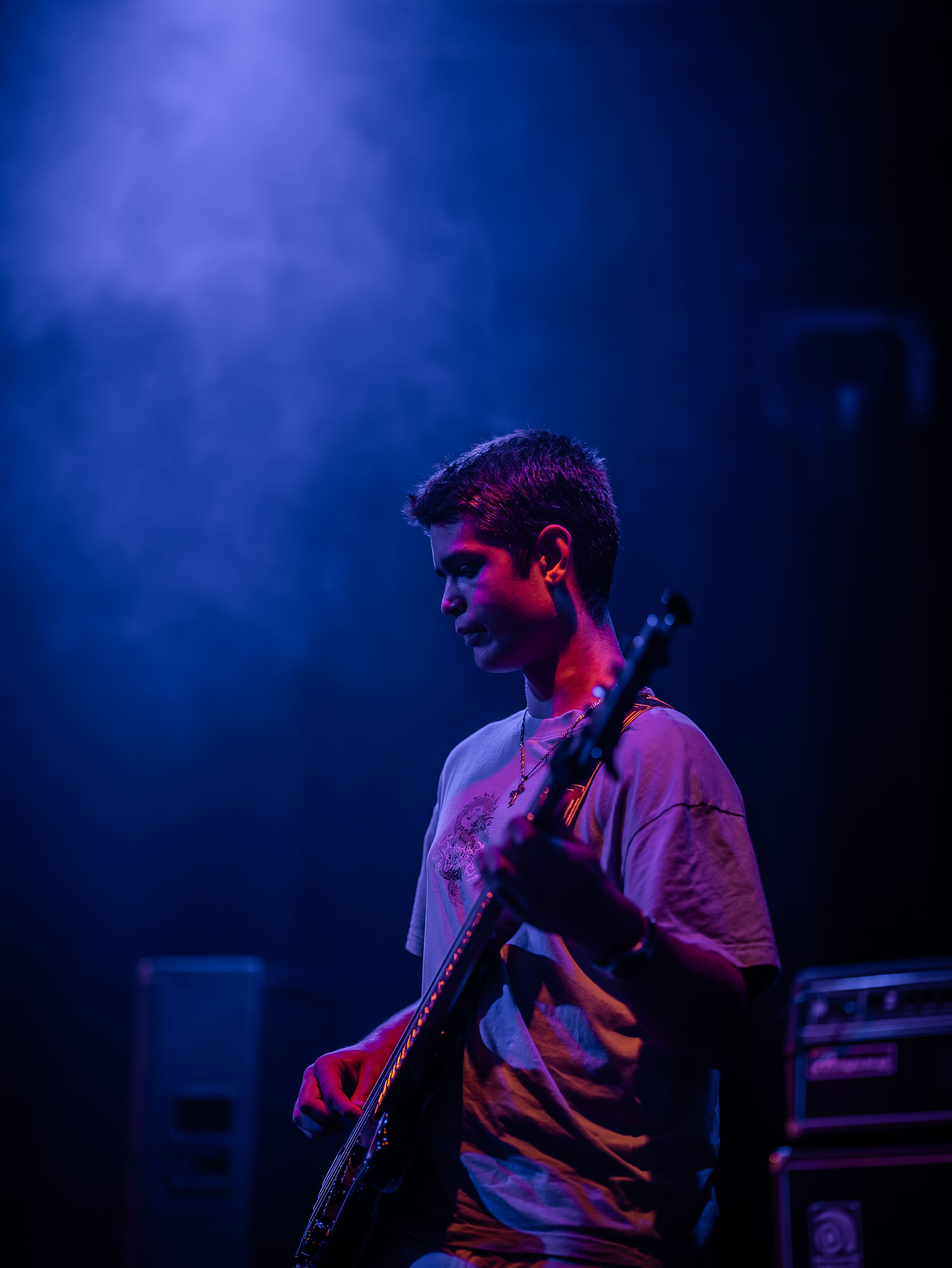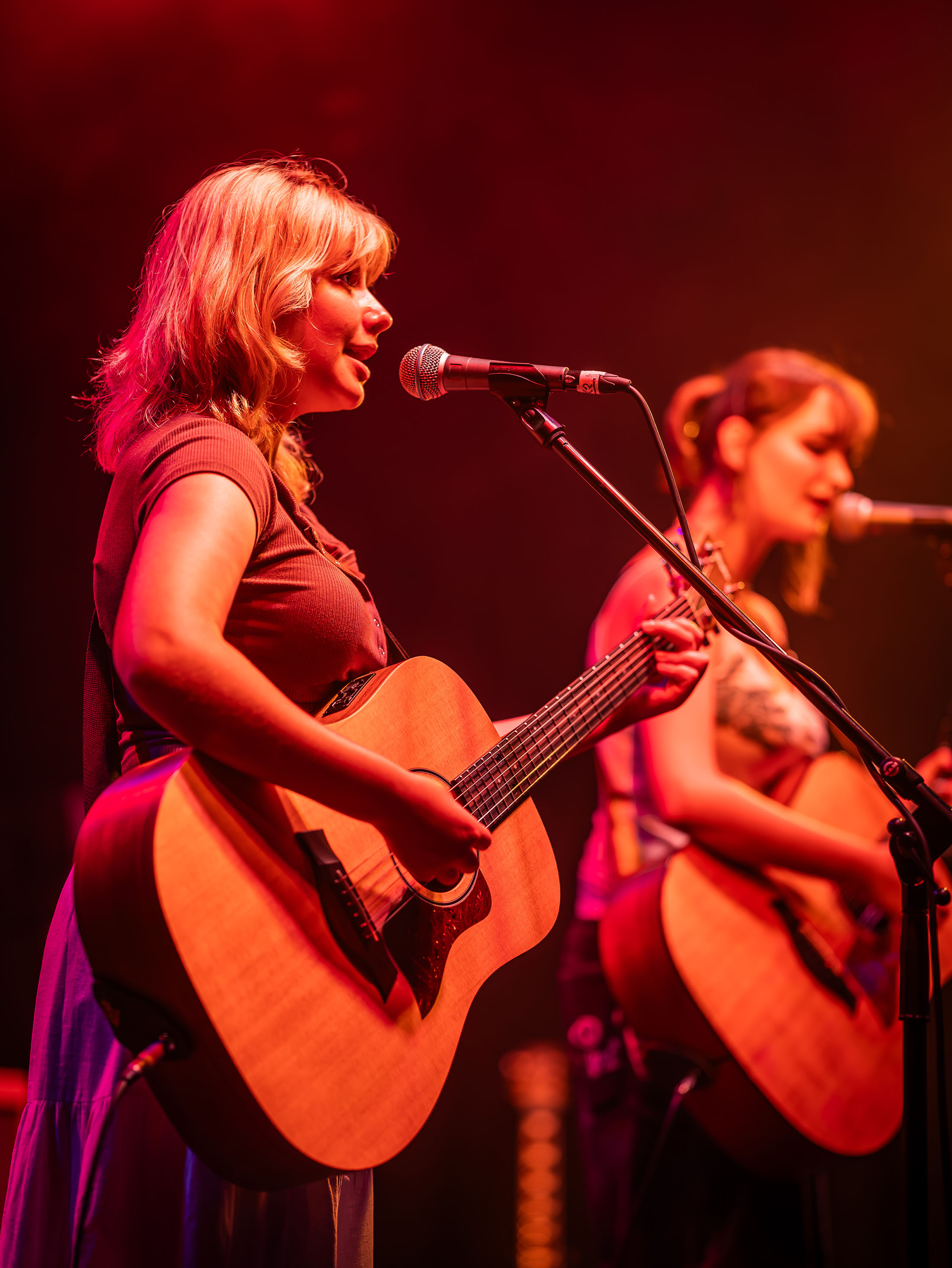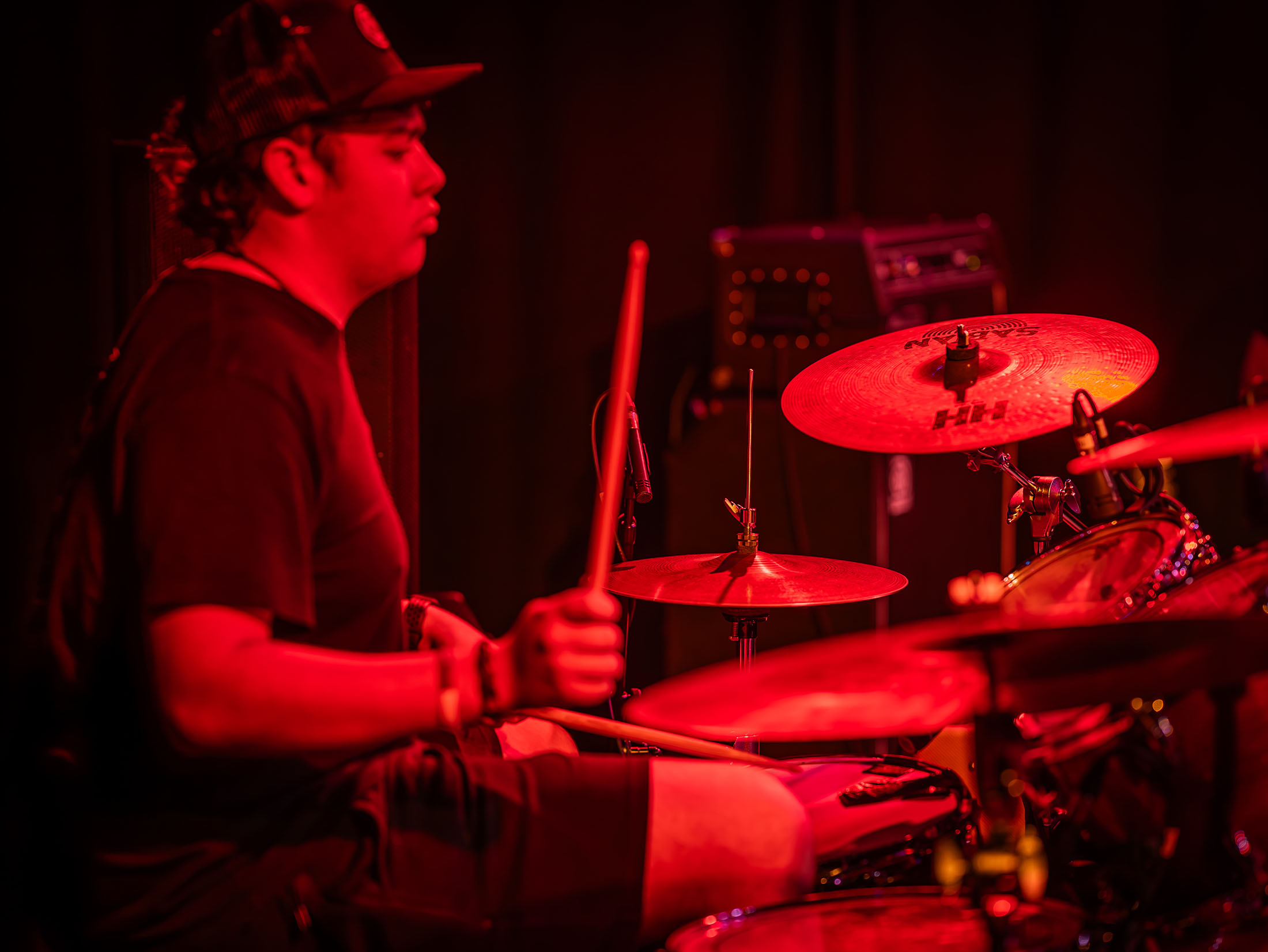Songs of Aotearoa
Inside this performing arts centre, Laughton Kora sees more than just kids learning a few chords. In his eyes, this is the next generation of Kiwi music. They are storytellers.
Inside this performing arts centre, Laughton Kora sees more than just kids learning a few chords. In his eyes, this is the next generation of Kiwi music. They are storytellers.
Behind the doors of an unassuming building in the heart of Mount Maunganui, the strum of a guitar, the beat of a drum, and the tap on a microphone breaks the silence.
At the front of the room stands a familiar face in Aotearoa music. Here, inside the Mauao Performing Arts Centre, he’s not on stage or under the spotlight, but in front of a group of wide-eyed students.
To Laughton Kora, they’re more than just kids learning a few chords. They’re the next generation of Kiwi music.
“I look at them as storytellers,” he says.
To Laughton, each student has a story, a song, inside them just waiting to be heard.
This isn’t just a music programme. It’s a journey into self-expression, guided by a mentor who knows the most powerful stories often begin with a single sound.
Aura Music Mentoring is a three-day workshop facilitated by Kiwi musician, producer and director Laughton Kora (Ngāi Tūhoe, Ngāti Pūkeko) and local drummer and producer Tia Drumma in Tauranga Moana.
Originally from Whakatāne, Laughton has been playing music since he was six years old. He’s been mentoring as part of the New Zealand Music Commission for more than a decade, visiting high schools throughout Aotearoa.
“It’s pretty cool. I love it.”
.jpg)
Here in the Bay of Plenty, Laughton is a familiar face at the Mauao Performing Arts Centre on Totara St.
Open the door to one of the five teaching studios and you’ll find a group of students buried in their music notes, headphones on, writing the next song to top the New Zealand music charts.
Inside the recording studio, the red light is on as another student sings their original lyrics through the microphone.
On stage in the Totara St performance space is where the magic happens. Equipped with a high-quality audio P.A system, in-house lighting and mezzanine floor - it’s like the real deal.
They’re not just learning the basics. They already know how to do that, says Laughton.
He’s teaching them beyond the beats, including how to use social media to promote music, how to write for radio, performance value, where to stand on stage, how to apply for funding, and learning about music royalties.
“It’s more than just: This is G, C, D. It’s more than just doing a cover,” he says.
“For me, I am trying to bridge the gap between the artist and the industry. I don’t want to teach anyone their art.”
Laughton says platforms like Totara St and Mauao Performing Arts are important for musicians to have a space to “just be”.
Founded in 2010, Mauao Performing Arts Centre’s mission is to provide a fun and educational experience in the performing arts. Inside is a music-lovers’ dream, with a music academy and teaching studios, arts tuition area, staged theatre space and audio recording and video editing suite.
Students are taught a craft by skilled tutors who are each involved in different aspects within the music and performance industries. Bands, solo projects, recording and production experience enable them to bring a wealth of knowledge to their lessons.
Ten years ago, the doors swung open to its 420-capacity performance venue Totara St.
Since then, Totara St has become the Bay of Plenty’s premier live music, entertainment and events facility, playing host to some of New Zealand’s most prestigious artists and entertainers.
“Don’t just do one, do more and do it again. If a gumboot and chopsticks gives a good beat, then great. Record it, mix it up and make it yours.”

The Totara St stage has hosted well-known New Zealand and international artists including L.A.B, Hollie Smith, Tiki Taane, the Jordan Luck Band, Gin Wigmore, I Am Giant and Trinity Roots.
When Laughton visits, he is searching for the individual voices that stand out from the crowd.
“Your brand is your music. You’ve got to get your songs right.”
Laughton, one of four brothers in the originally-formed Kiwi band Kora, says he learned most of his stage craft while training at Toi Whakaari NZ Drama School.
“I’ve been playing music since I was six years old. My brothers and I would play for five or six hours a day, not to practice but just for fun,” he says.
“For me, music is a universal language. It’s a cool way of telling stories.”
The next generation of music artists, he says, are facing a flooded market with 6000 of songs submitted to Spotify each day and Artificial Intelligence challenging originality.
“Popularity is governed by streams and likes, not necessarily the technical side of things.”
Laughton likes to break it down.
He always begins with one important question: “Who are you and how do you want to be seen?”
“That will govern where you will go in the industry and the world,” he says.
“Your art is bravery and courage. It can also be therapy if that works too.”
“What becomes magic is when you get to see the person behind the music, their personality.”


Laughton remembers what he calls the “Golden Era” of Kiwi music in the early 2000s. Think The Black Seeds, Kora, Fat Freddy’s Drop, Shapeshifter. “The community was so keen on original music. It invented Rhythm and Vines and heaps of other festivals. Everyone was into Aotearoa’s original sounds. It was rootsy.”
It’s those chilled, laid-back beats that Laughton doesn’t define as simply Kiwi music anymore.
“That’s because it’s on par with the rest of the world. It’s just music coming from Aotearoa.”
It’s not even a genre of music. Because that puts a time stamp on sound, Laughton says.
Music is songs, songs are stories, and stories are timeless. “And there’s plenty of stories to be told.”
Fast forward to the future and Laughton hopes Aura Music Mentoring will count towards a formal qualification. Not a diploma, but a Bachelor of Contemporary Art or something similar.
“There’s a lot of musicians, a lot of bedroom music players, out there. It’s quite hard to just do it on your own. We were on our own, but we were part of a whānau.”
He hopes his programme will continue to build a community for budding artists to become part of.
“It’s making a space for people to just be. I love watching music being born.”
Laughton’s advice for the next generation of music artists is: Practice, practice, practice. Whether that is on the instrument, writing songs or producing them.
“Don’t just do one, do more and do it again. If a gumboot and chopsticks gives a good beat, then great. Record it, mix it up and make it yours.”
mauaopac.co.nz
totarastreet.co.nz
@auramusicmentoring
Words by Zoe Hunter


